Tungsram Special Lamps
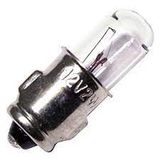

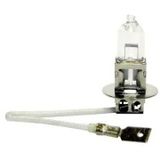
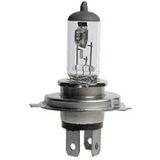
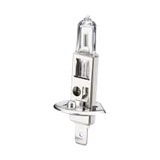
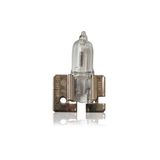


tungsram special lamps project context and engineering intent
Tungsram’s specialty portfolio fills the gaps where standard sources don’t cut it: germicidal UV for air/water treatment, infrared for heat-driven processes, short-arc for projection, and niche medical/light-therapy lines. Engineers keep these sources in the spec when wavelength, radiant density, or arc geometry must be tightly controlled and when existing optics or process windows make LED swaps impractical.
tungsram specialty lighting range and form factors
Coverage spans low-pressure mercury UV-C tubes and amalgam lamps, medium/short-wave IR (quartz halogen) emitters in linear or twin-tube form, and compact short-arc MH modules for projection optics. Caps and bases include G5/G13 for UV tubes, R7s/SK15s and custom ceramic blocks for IR, and precision mounts with alignment notches for projection. Power runs from sub-10 W UV indicators up to multi-kilowatt IR cassettes; supply is typically 220–240 V, 50/60 Hz with electronic control gear where stability or flicker matters.
tungsram uv lamps germicidal and curing parameters
UV-C outputs center around 254 nm for DNA/RNA inactivation; ozone-forming variants include 185 nm for advanced oxidation. Expect radiance classes selected against target dose (mJ/cm²) and flow rate; quartz sleeves and thermal management keep arc temperature stable on pressurized systems. For resin/ink curing, UVA/UVB blends target 315–400 nm with reflector geometries that hold irradiance across the web. Reference IEC 62471 for photobiological safety and ISO 15858 for UV-C safety information in occupied spaces. Teams often stock tungsram uv lamps alongside validated housings so dose mapping and change-outs remain consistent between sites.
tungsram infrared lamps heating and process control
Short-wave IR (0.8–1.4 µm) delivers high power density with millisecond response; medium-wave (1.4–3 µm) couples better into coatings and plastics. Linear quartz emitters up to several kW run in open frames or forced-air cassettes; phase-angle or PWM controllers track setpoint while soft-start extends filament life. Specify gold/ceramic reflectors when you need directional flux and shield nearby sensors from radiative load. Industrial dryers, thermoforming, and paint lines frequently schedule tungsram infrared lamps where ramp rates and uniformity are audited.
tungsram projector lamps optical performance and service
Short-arc metal-halide designs provide small, bright sources for integrator rods and precision reflectors. Typical ratings sit 120–400 W with color temperatures in the 6 500–8 000 K band and tight arc gaps for high luminance. Electronic ballasts with hot-restrike capability stabilize power and limit crest factor; alignment jigs keep the arc at the reflector focal point to maintain ANSI lumen output and color uniformity. AV service desks reference tungsram projector lamps by wattage, burner geometry, and reflector code so onsite swaps don’t disturb focus or keystone.
tungsram medical lamps clinical and lab applications
Narrowband UVB around 311 nm supports dermatology protocols; germicidal UV-C modules serve air cabinets and endoscope reprocessors with interlock contacts and leakage shields. IR sources provide local hyperthermia or warming for blood lines and incubators where response time and spectral match matter. Electrical design follows IEC 60601 system principles at the device level, with lamp modules validated for spectral output and aging. Hospital engineers catalogue tungsram medical lamps by dose rate, footprint, and interface (0–10 V/relay) to simplify calibration and replacement.
tungsram industrial special lights integration and control
Process lines pair emitters with closed-loop sensors: UV photodiodes for dose, IR pyrometers for surface temperature, and encoder inputs for line speed. Panels use contactors to SIL-rated interlocks where required; SSRs or thyristor packs modulate IR. EMC practice—360° braid clamps, SELV/mains segregation, and earthing at gland plates—keeps drive noise away from detector wiring. In multi-zone ovens and curing tunnels, maintenance teams document tungsram industrial special lights by zone, kW, reflector finish, and control channel so spares align with recipe files.
Integration with other Tungsram products
Coordinate lamp modules with Tungsram electronic ballasts, IR power controllers, quartz sleeves, and validated reflectors. Keep a single coordination sheet listing permissible cable lengths, thermal limits, and sensor wiring. Mixed estates often run discharge, IR, and LED together; matching optics and CCT where relevant helps tungsram specialty lighting coexist without recalculating every scene.
Selection criteria for B2B clients
Start from the process target, then lock hardware:
• Dose or heat load: define required mJ/cm² or °C/°C·s, then select emitter wavelength and power class.
• Geometry: confirm working distance and window materials; UV needs fused silica, IR tolerates borosilicate only to a point.
• Control: choose ballast/thyristor type, soft-start, and monitoring I/O; specify interlocks for access panels.
• Environment: check IP rating, airflow, and contamination; add sleeves/filters where splashes or dust occur.
• Maintenance: set relamping/derating rules by hours and sensor drift. Projects that standardize tungsram special lamps SKUs cut validation time, and projector fleets benefit when tungsram projector lamps are tied to fixture serials in the CMMS.
Advantages of working with Bankoflamps
Procurement tracks your commissioning windows with job-specific pricing, near-hour quote turnaround by EAN/MPN, and live EU stock before crews are booked. The portal shows lead times, shipment tracking, and downloadable price lists with validity periods you can plan against. Trusted buyers can use post-payment up to 30 days. We consolidate partials so emitters, ballasts/controllers, sleeves, reflectors, sensors, and panels arrive room-bundled by line or zone. Your account manager cross-checks wattage ranges, spectral targets, enclosure IP, interlock schemes, and EMC notes against drawings—keeping deliveries site-ready across France, the Baltics, Germany, Spain, Italy, Belgium, and the Netherlands. This also reduces surprises when rolling out tungsram industrial special lights across multi-site programs.